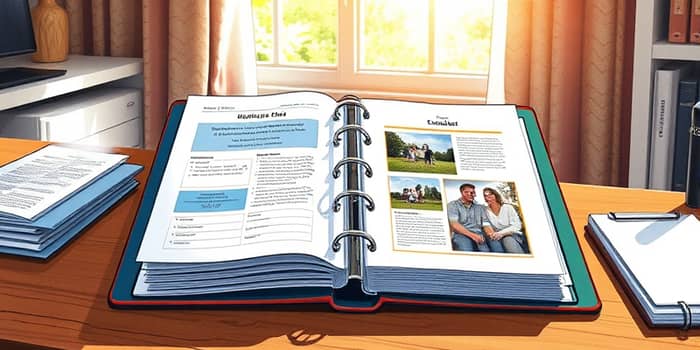
Retirement marks the beginning of a new chapter filled with opportunity, rest, and reflection. Yet, without proper preparation, vital documents scattered across drawers and digital files can create stress in emergencies or during important life events.
Building a comprehensive retirement binder offers complete peace of mind and clarity while ensuring you and your loved ones can access essential records effortlessly when needed most.
In this article, we explore the journey of gathering, organizing, and maintaining every critical document so that your retirement years are defined by freedom rather than paperwork chaos.
Imagine waking up one morning to find that a close relative is suddenly hospitalized. In that moment, scrambling to find insurance cards, medical directives, or emergency contact lists only adds to the worry. A well-structured binder can transform that frantic search into a calm retrieval process.
Likewise, when tax season arrives or a financial advisor requests paperwork, having every form at your fingertips saves time, money, and frustration. By compiling documents methodically, you create secure a reliable backup online and in physical form for any eventuality.
Ultimately, a retirement binder serves not only you, but also the family members and estate executors who will thank you for streamline estate settlement for loved ones and ensure your legacy is honored without unnecessary delays.
Organizing every record into clear categories simplifies retrieval and updates. Your binder should include at least these six sections:
By grouping documents logically, you ensure that anyone flipping through the binder can locate information with ease, even under pressure.
Begin with a sturdy three-ring binder and invest in durable, labeled dividers. Consider the following approach for each category:
Personal Identification and Contact Information
Gather full legal names, Social Security information, copies of passports and driver’s licenses. Include a detailed contact list of family, friends, and professional advisors. Adding a few recent photos can provide comfort and assist in identification if needed.
Financial Records and Insurance Policies
Document sources of income, pension statements, Social Security details, and retirement account summaries. Tuck in beneficiary designation forms, life insurance policies, and mortgage or loan records. A summary sheet of all bank and brokerage accounts helps you see the full financial landscape at a glance.
Health and Medical Documents
Maintain an up-to-date prescription list, health insurance cards, and policy numbers. Include advance directives such as living wills and healthcare powers of attorney. Copies of DNR orders and relevant medical forms ensure your wishes are respected without delay.
Legal Papers and Directives
Keep your will, trust documents, and power-of-attorney forms organized. Note the location of originals if they are stored elsewhere, such as a safe deposit box. Guardianship papers or special instructions for dependents should also be readily available.
Household and Lifestyle Records
Include home and auto insurance policies, mortgage documents, and utility bills if you prefer to track payment histories. Manuals and warranties for major appliances or vehicles can simplify repairs and estate liquidation down the road.
Other Important Details and Memberships
List organization memberships, club benefits, awards, and certificates of achievement. Religious directives or instructions for memorial services and pet care guides can provide comfort to those handling arrangements on your behalf.
Building a retirement binder is a project that pays dividends over years. Follow these guidelines to maintain its effectiveness:
With these protocols in place, your binder remains a living document, evolving as your life changes and ensuring you always have the right paperwork on hand.
Not all documents require the same retention period. Use this table as a guideline:
Regularly purging outdated items prevents clutter while keeping your binder streamlined and functional.
Even meticulous planners can miss crucial paperwork. Verify you have the following in place:
Addressing these often-overlooked items today avoids complications and confusion tomorrow.
By investing time in creating and maintaining a retirement binder, you gain far more than just a collection of papers. You cultivate:
accessible in every urgent situation backup for unexpected events; trusted family member or attorney can execute affairs smoothly; and enhanced confidence in future plans knowing all details are neatly organized.
Embrace this practical tool as a gift to yourself and those you care about. Let your retirement journey be defined by enjoyment, discovery, and freedom—rather than the stress of hunting down documents at critical moments.
References













